Nuclear Power
As the world moves away from using fossil fuels for creating electricity, alternative methods need to be explored. Whilst renewable energy is the greenest solution to the problem, technologies such as wind turbines and solar farms aren’t reliable or common enough in the UK yet to provide all the electricity we need. However, nuclear power could provide part of the solution to this energy crisis, as it can be a consistent and reliable way of providing power to entire cities and regions.
When fission (the process of atoms in nuclear fuel being hit by neutrons, causing them to split apart) occurs in a reactor, heat is generated, which turns water into steam that then turns a turbine, creating electricity. Fission happens in all reactors, but the type of fuel used can vary depending on the reactor design.
Have a go at the activities below to learn more about main isotopes associated with nuclear power, along with some of their other uses!
Neutron number ordering game
Look at the cards and order them in smallest to largest number of neutrons.

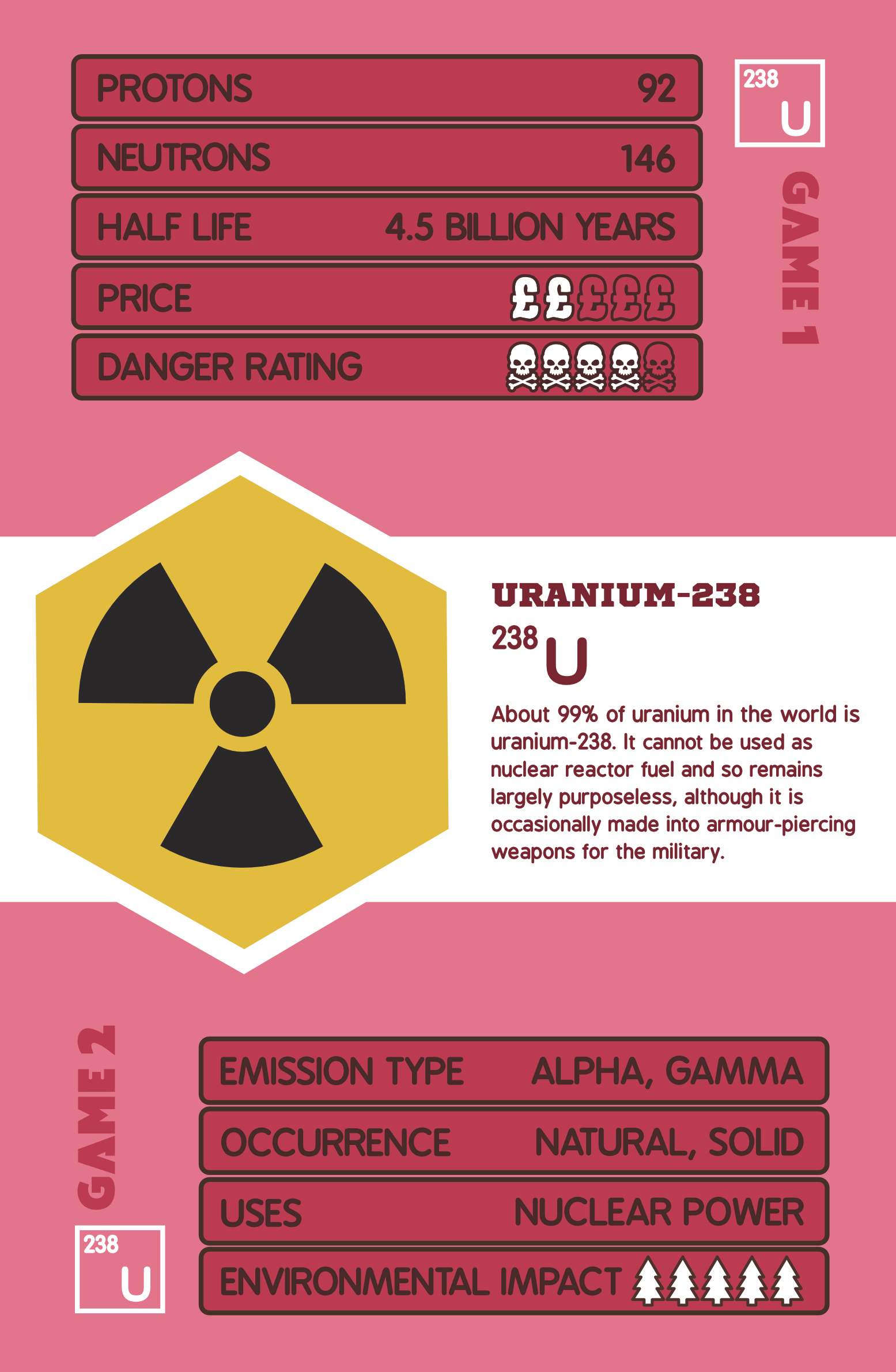
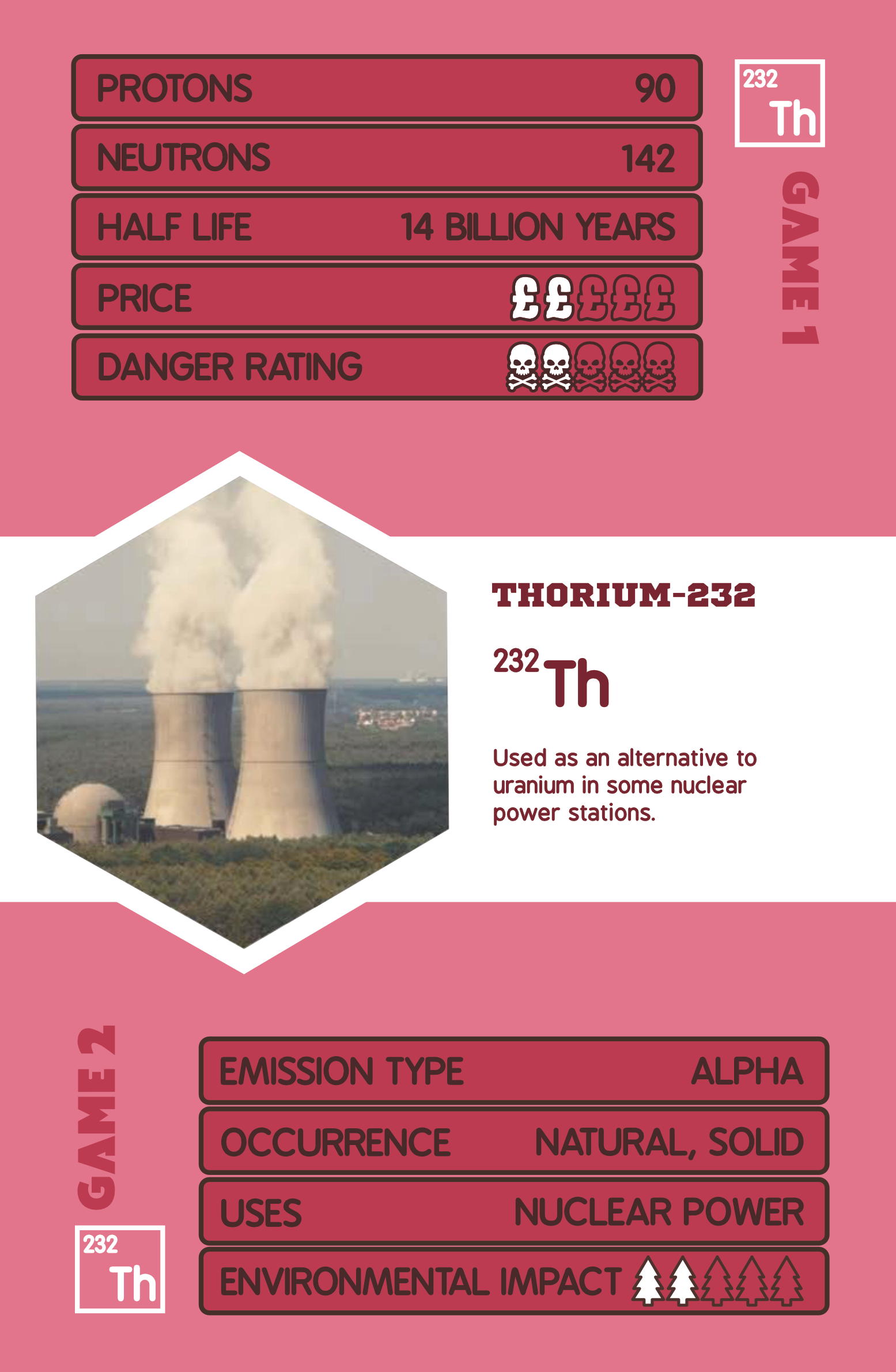
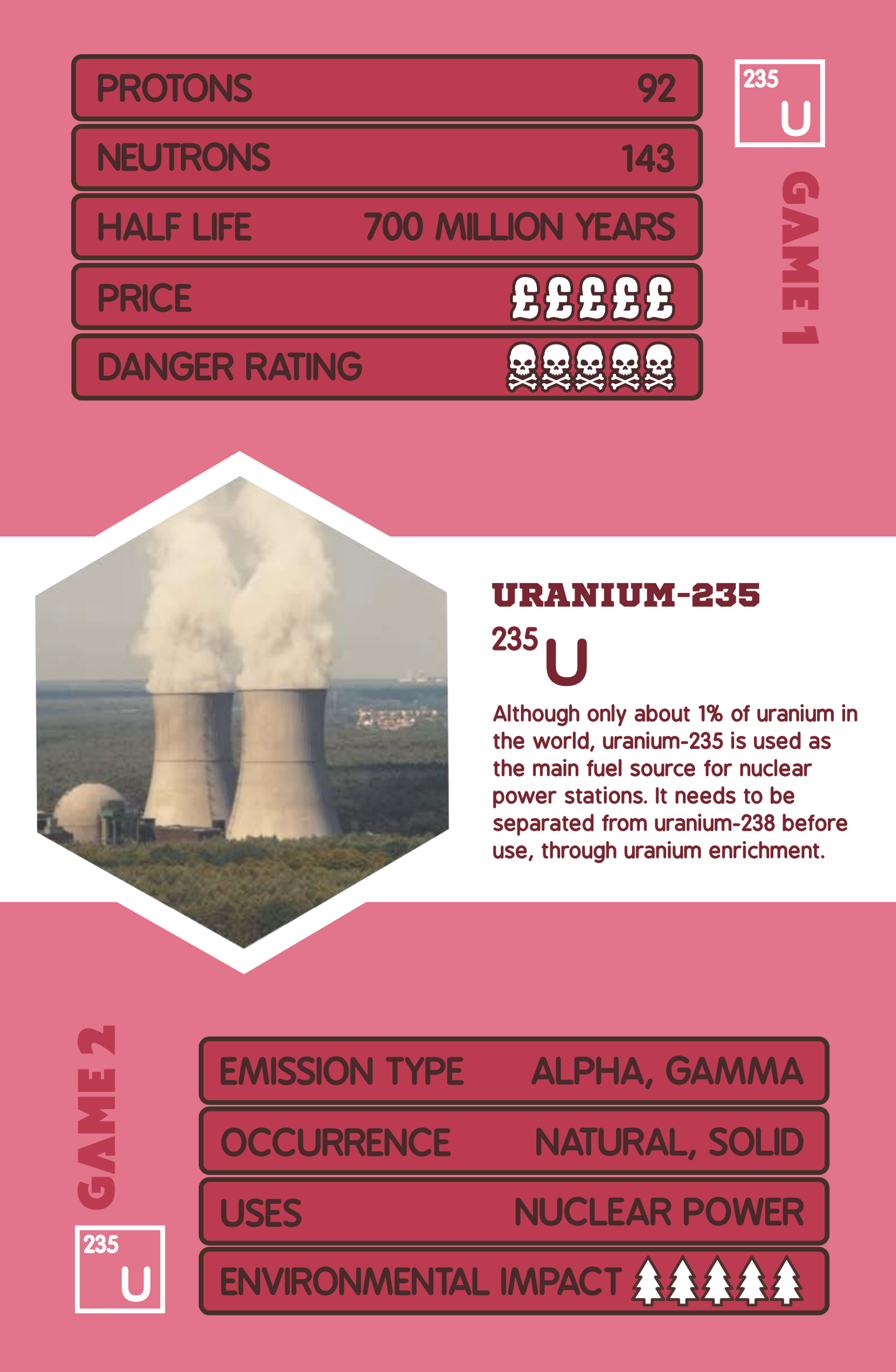
Half-life ordering game
Read through each of the cards and place them in order of shortest to longest half-life.




Radionuclide description game
Think you know your radionuclides? Test your knowledge by matching each isotope with its correct description.
.png)
.png)
.png)
.png)
Scenario game:
Read through the scenarios below and pick the radionuclide that is best suited for the job.
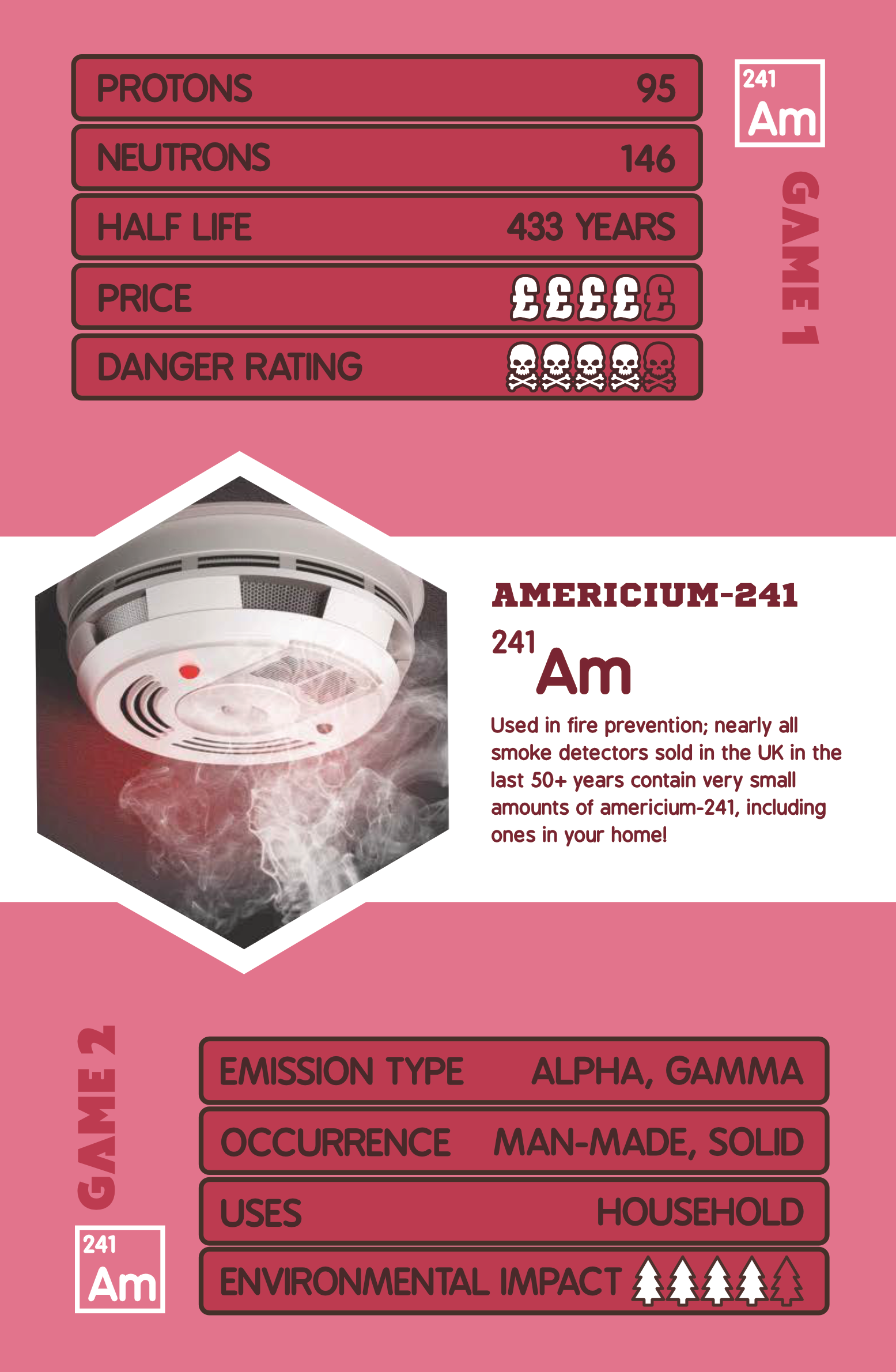
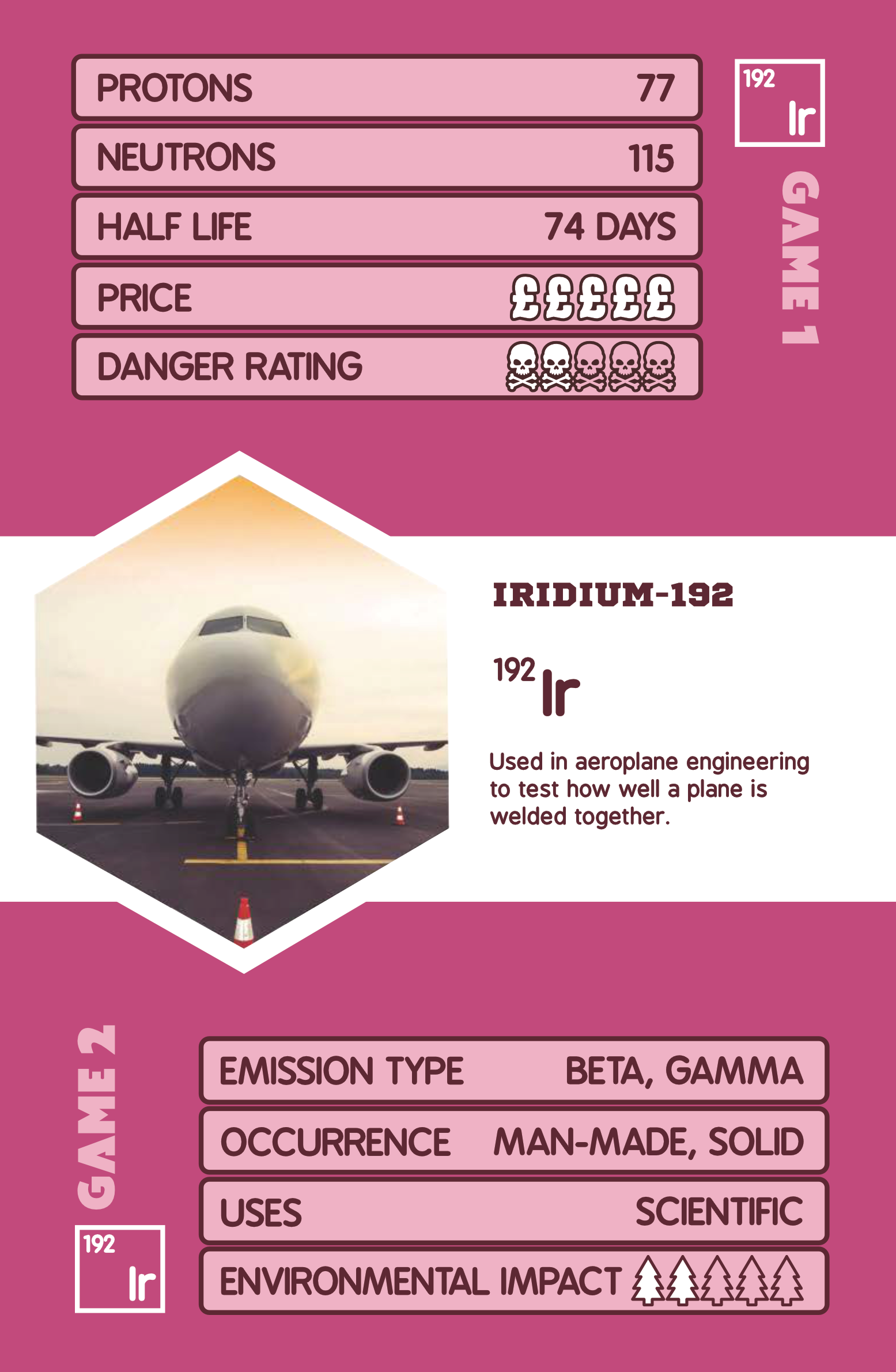
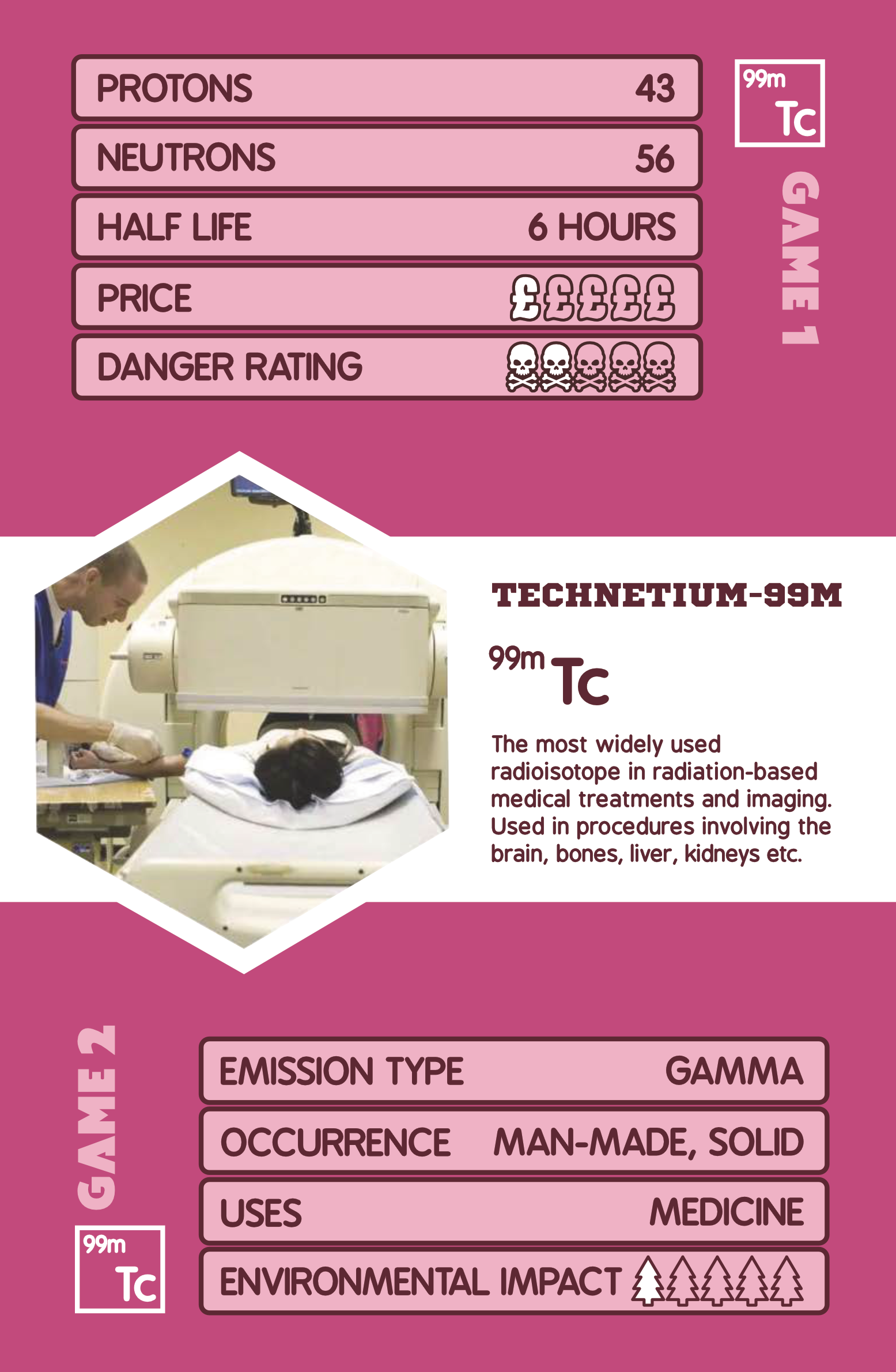
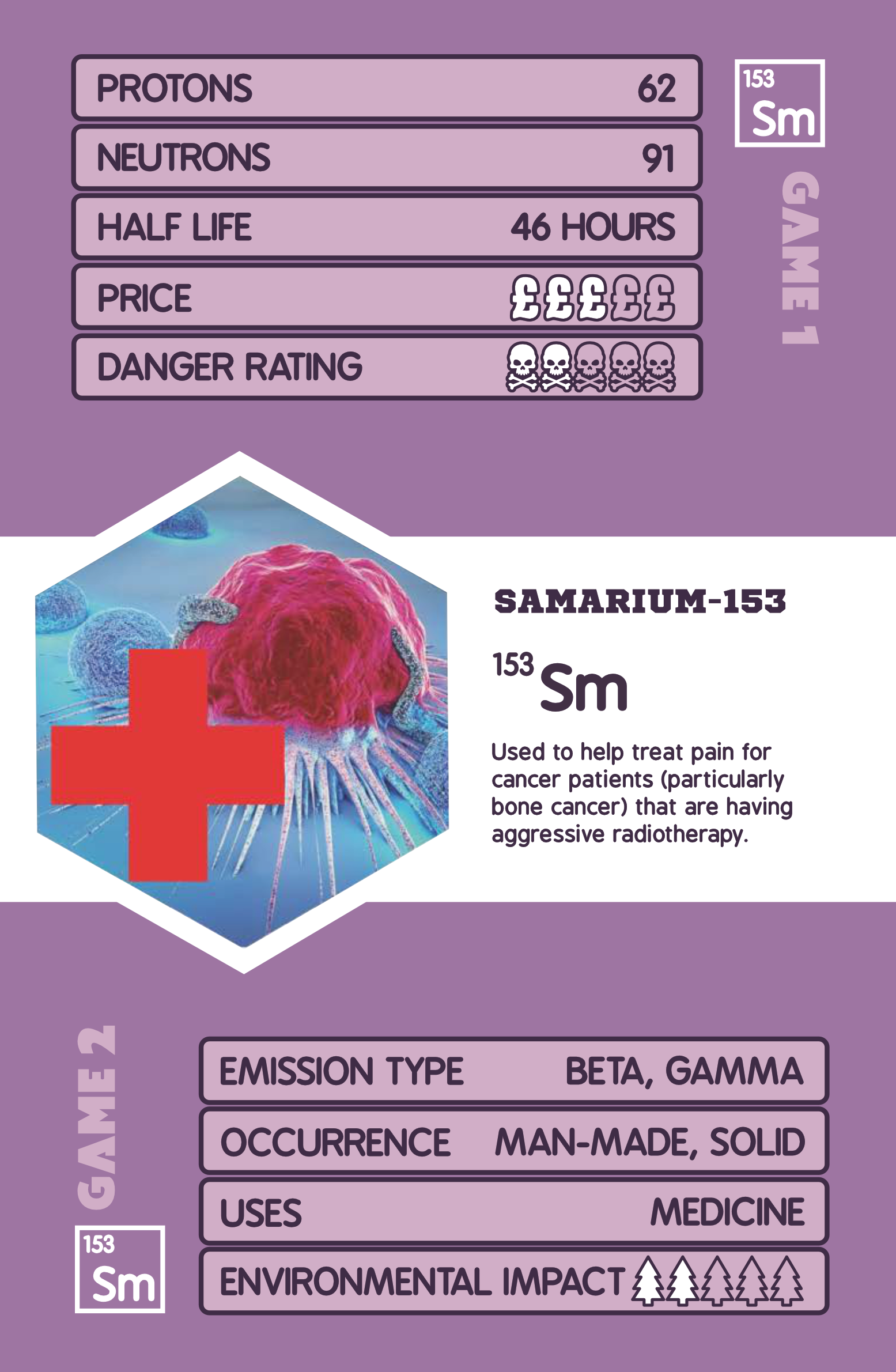
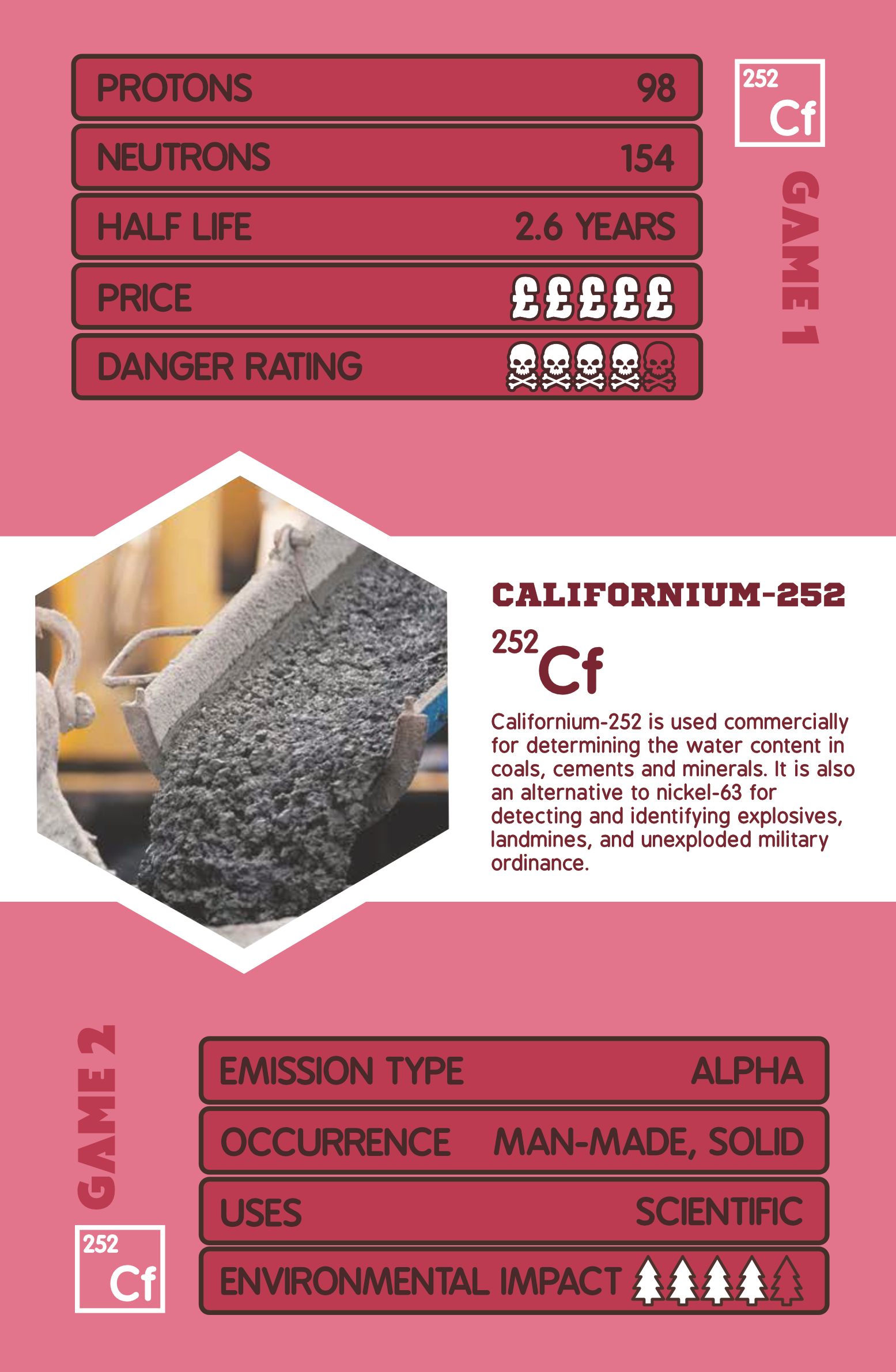


.png)

